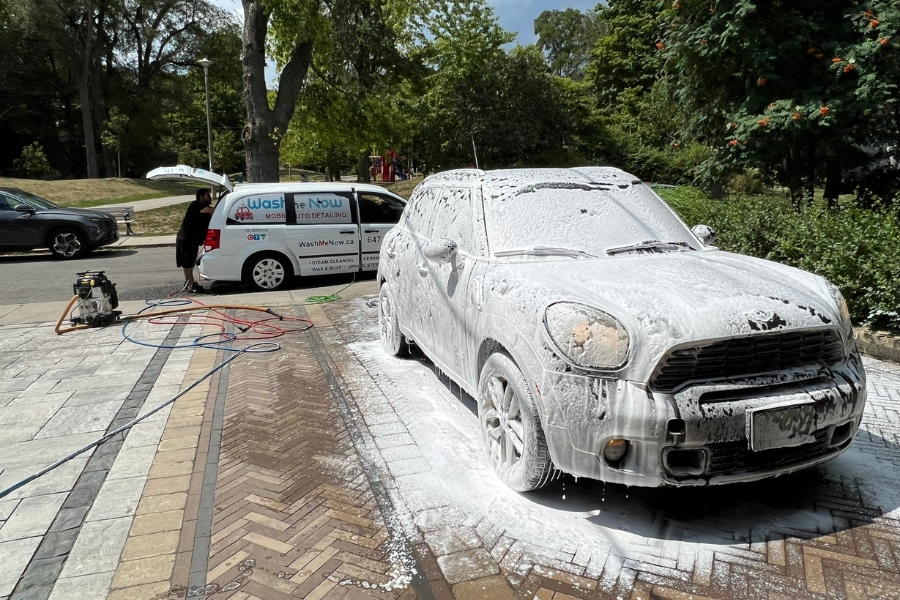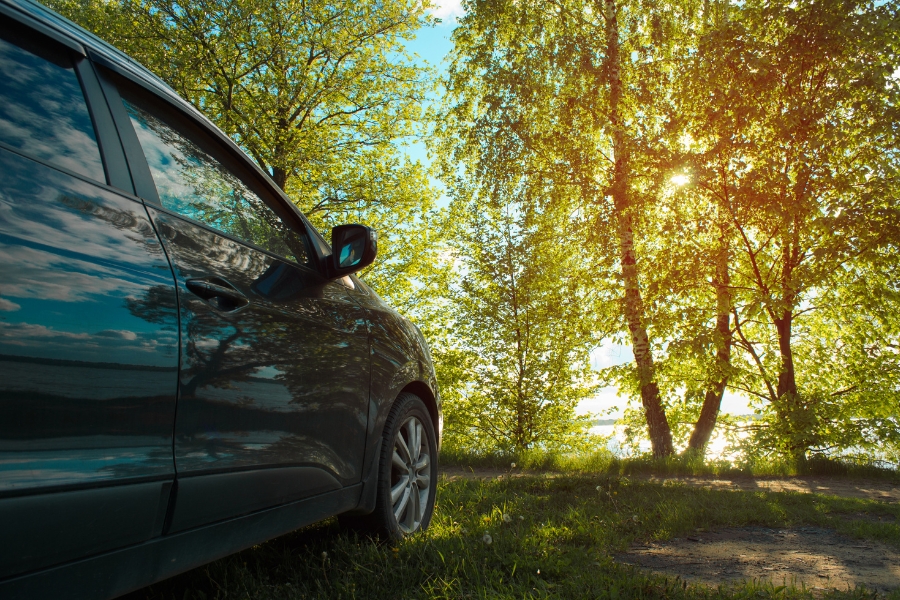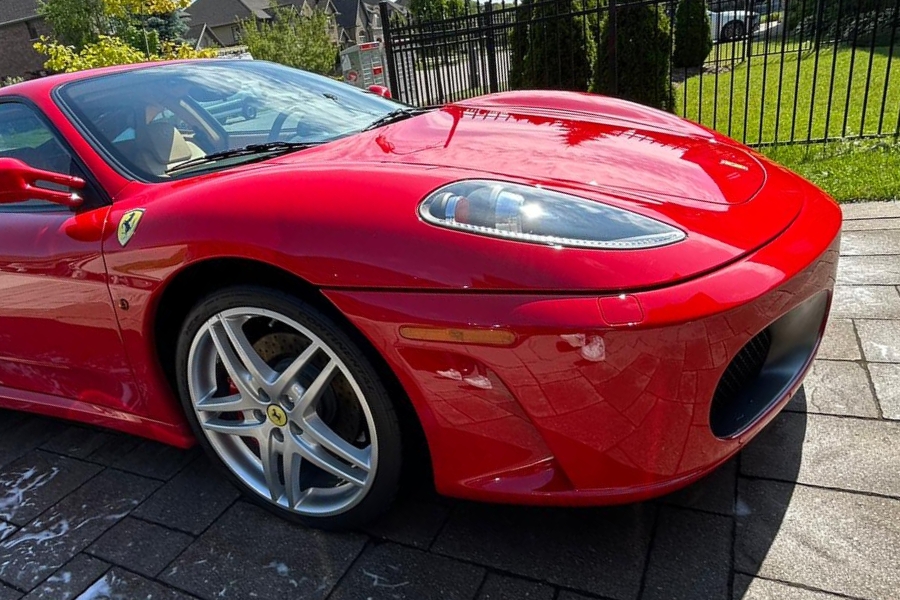Just like humans, your car is enduring some serious heat during this season. These strong UV (ultraviolet) rays can wear down your car’s paint, dry out your dashboard, and even do damage to your seats – all of which are never fun to look at. This begs the question: how can you protect your car from UV damage inside and out?
Here are the 5 best ways to block the sun from reaching your car’s delicate surface – all of which are popular among car enthusiasts and offer a low-maintenance way of shielding your car from the elements.
What Is UV Damage On A Car?
UV (ultraviolet) damage happens when sunlight breaks down the surfaces of your car over time. Even on cloudy days, UV rays can sneak through and slowly cause wear and tear. That’s why it’s so important to take steps early on to protect your car from UV damage – it can affect both the outside and the inside of your vehicle. Here’s what to look out for:
- Faded paint or dull spots on the exterior
- Cracked or warped dashboard
- Discoloured upholstery or leather seating
- Weak rubber trims and faded headlights
5 Best Ways To Shield Your Car from UV
1. Wash and Dry Your Car Regularly
Washing your car is more than just beautifying it. This habit can actually protect the surface of your car from the sun. Here’s the simple explanation: dirt and grime left on your car act like tiny magnets for UV rays, speeding up damage. This debris breaks down your car’s protective wax or clear coat, exposing the paint to direct UV rays. Some particles can also trap heat or reflect sunlight, intensifying UV damage and speeding up fading or oxidation.
When you wash and dry your car regularly, it helps keep the surface clean and safe. Drying with a soft cloth also prevents water spots, which can reflect sunlight and make things worse. If you don’t have the time or tools for a proper clean, our car detailing services in the GTA guarantee that your vehicle is free from any grime, leaving your car spotless and better protected.

2. Add a Protective Layer to the Paint
There are two main ways to create a barrier between your car’s paint and the sun: waxing and paint sealants. Think of them as a sunscreen for your car! A protective ceramic waxing is more common and affordable. It gives your car a beautiful shine while also offering short-term UV protection lasting about a month or two. It’s great for people who enjoy taking care of their cars often and want that just-washed look.
On the other hand, surface paint sealants (also known as PPF or clear bra) are synthetic products that bond to the surface and can last for several months. They don’t give the same shine as wax, but they offer longer-lasting protection, especially helpful if your car sits in the sun all day and if you’re not much of a car caretaker.
Both methods help protect your car from UV damage, which is the end goal! Choosing between them depends on how much time and effort you want to put in.

3. Apply UV Protectant on Interior Surfaces
The inside of your car is just as vulnerable to sun damage as the outside, especially through the windshield. Dashboards, steering wheels, and seats can all dry out and crack over time.
Using a UV-blocking product on these surfaces helps prevent fading and keeps the material from getting brittle. You don’t need to do it daily; just once a month is enough to keep things in good shape. It also helps your car feel cleaner and more comfortable when you drive.
4. Tint Your Windows
It might seem unrelated, but tinting your windows can do more than offer privacy. Window tint film helps block some harmful rays from reaching the inside of your car, especially if it’s designed specifically for protecting against UV rays. It reduces heat and protects your dash, seats, and steering wheel from getting too much sun. It might also make your car more comfortable during hot days.
Window tint doesn’t have to be expensive, and there are budget options that still block a large percentage of UV rays. Some DIY kits are even more affordable if you’re confident in installing them yourself.
5. Park Mindfully
Our last trick won’t cost you a penny (only if there’s free parking, at least). Parking your car where there’s shade is great to fend off those UV rays. Try to find a shaded area to park when you can: under a tree, beside a building, or inside a garage.
If you can’t find shade and think you’re out of luck, try buying a windshield cover. It’s not as affordable or free as finding a shaded parking spot, but it has the same effect, especially if you don’t want the inside of your car to be even a tiny bit exposed to the sun.

Don’t Let Your Car Tan
Say bye to the days when your car is suffering in silence, and learn how to keep the inside and outside of your car away from UV rays. Stay ahead of the problem with simple steps like regular washing, waxing, using protectants, and parking smart. These habits don’t take much time or effort (if you’re enlisting the help of detailing professionals), but they truly go a long way in helping you protect your car from UV damage and keeping it looking like new, no matter how hot it gets.
